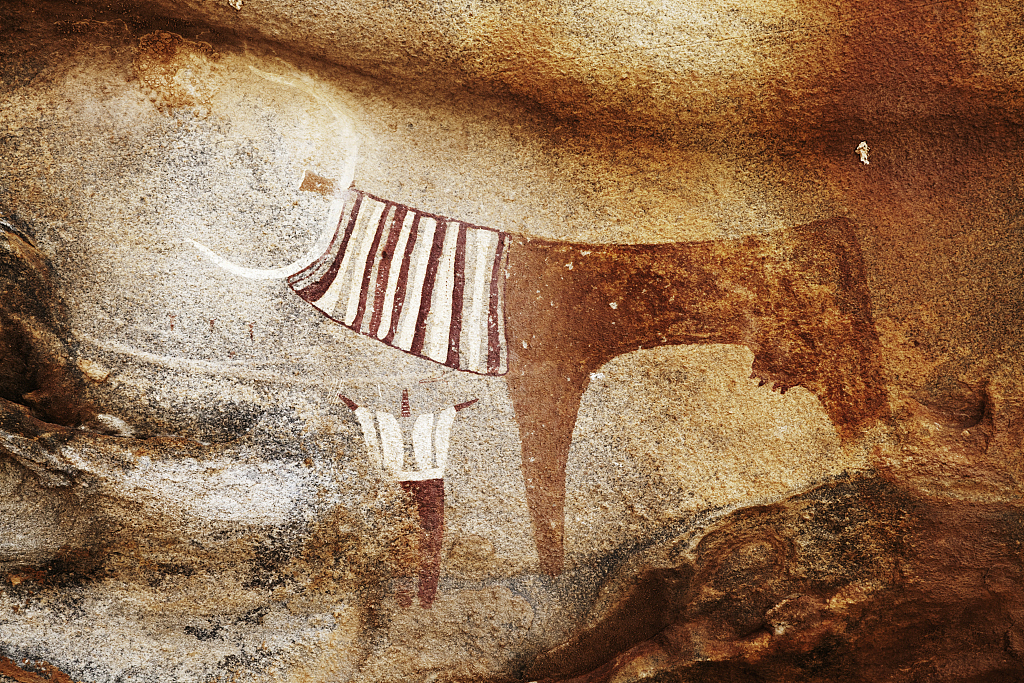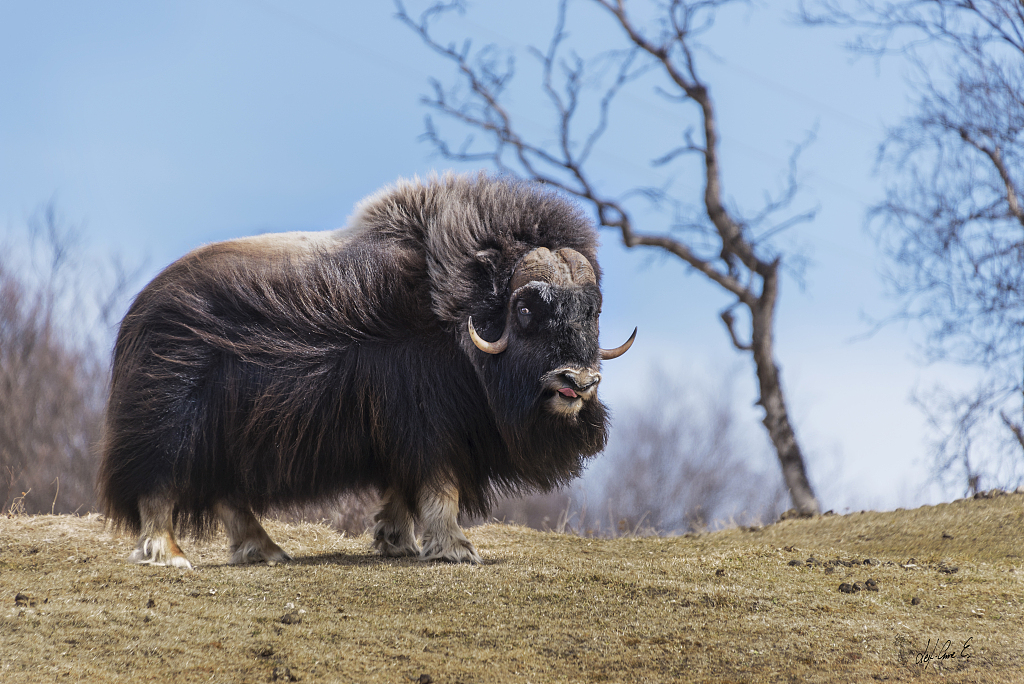Researchers have demonstrated that some present-day low-latitude tropical wildlife species lived on the high-altitude northeastern Qinghai-Tibet Plateau 5,200 years ago.
Wild bovids used to be important prey on the plateau, where hunting was a major subsistence strategy until the late Neolithic period.

Cave painting of humans and animals in the Neolithic period. /CFP
Cave painting of humans and animals in the Neolithic period. /CFP
Researchers from Lanzhou University, the Northwest Agriculture and Forestry University, the Chinese Academy of Sciences, the Gansu Provincial Institute of Cultural Relics and Archaeology, as well as the Natural History Museum in the United Kingdom applied ancient DNA analysis to fragmented bovid and rhinoceros specimens dating back 5,200 years, which were obtained from a Neolithic site located on the Qinghai-Tibet Plateau.
They demonstrated that present-day tropical gaur, large wild oxen, lived as far north as the margins of the plateau, between the 29th and 34th parallel north, during the late Neolithic period.

The animals may have moved there due to the high summer temperatures on the plateau at the time, according to the research, which was published in the journal PNAS.
This movement enriched the diversity of local wildlife, providing abundant hunting resources for humans.
But between 5,000 to 4,000 years ago, tropical wildlife species such as gaurs began to decline due to climate change and human activities. The gaur is now an endangered species.
(Cover image via CFP)
(If you want to contribute and have specific expertise, please contact us at nature@cgtn.com.)
Source(s): Xinhua News Agency